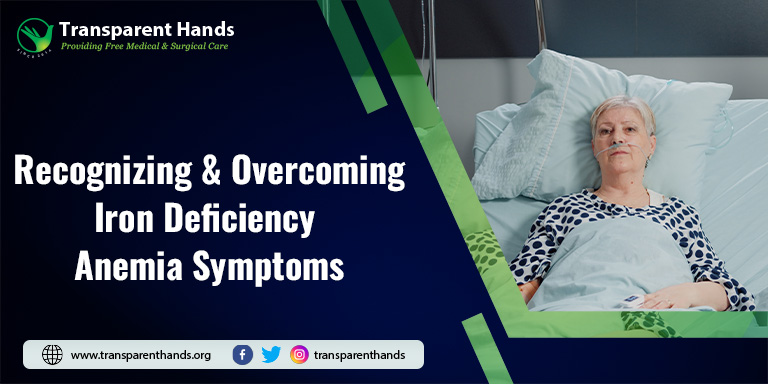Recognizing and Overcoming Iron Deficiency Anemia Symptoms

Iron is an essential nutrient that plays a vital role in the human body. It helps in the production of red blood cells and helps to carry oxygen to various organs in the body. Iron deficiency is one of the most common nutrient deficiencies, and it can lead to iron deficiency anemia if not treated timely. Iron deficiency anemia occurs when there is a lack of iron in the body, leading to a decrease in the number of red blood cells or a decrease in hemoglobin levels. In this article, we will discuss the iron deficiency anemia symptoms and how to recognize them to overcome fatigue.
Iron Deficiency Symptoms:
Iron deficiency can lead to various symptoms that may go unnoticed initially. The following are the most common iron deficiency symptoms:
- Fatigue: One of the primary symptoms of iron deficiency is fatigue. It occurs when the body does not have enough iron to produce hemoglobin, leading to a decrease in oxygen supply to the muscles and tissues.
- Pale Skin: Iron is responsible for giving the skin its natural color. A lack of iron can lead to pale skin or a yellowish tinge to the skin.
- Hair Loss: Iron deficiency can also lead to hair loss. It occurs when the body does not have enough iron to produce new hair cells.
- Shortness of Breath: A lack of oxygen supply to the body due to a decrease in hemoglobin levels can lead to shortness of breath.
- Weakness: Iron deficiency can lead to weakness, which occurs when the muscles do not get enough oxygen due to a lack of hemoglobin.
Iron Deficiency Anemia Symptoms:
If iron deficiency is not treated timely, it can lead to iron deficiency anemia. The following are its symptoms:
- Chest Pain: Iron deficiency anemia can lead to chest pain due to a lack of oxygen supply to the heart.
- Irregular Heartbeat: A decrease in the number of red blood cells due to iron deficiency anemia can lead to an irregular heartbeat.
- Headaches: Iron deficiency anemia can lead to headaches due to a decrease in oxygen supply to the brain.
- Cold Hands and Feet: A decrease in oxygen supply to the body due to iron deficiency anemia can lead to cold hands and feet.
- Restless Legs Syndrome: Iron deficiency anemia can lead to restless legs syndrome, which is characterized by an uncontrollable urge to move the legs.
Overcoming Iron Deficiency Anemia Symptoms:
The following are the ways to overcome the symptoms of iron deficiency anemia:
- Iron-rich diet: Consuming iron-rich foods can help overcome iron deficiency anemia and its symptoms. Foods such as spinach, red meat, lentils, and fortified cereals are rich in iron.
- Iron Supplements: Iron supplements are another way to overcome iron deficiency anemia symptoms. However, it is essential to consult a doctor before taking iron supplements as they can have side effects.
- Vitamin C: Consuming vitamin C-rich foods such as oranges, lemons, and strawberries can help increase iron absorption in the body. Must read benefits of Vitamin C
- Avoid caffeine: Consuming caffeine can decrease iron absorption in the body. It is advisable to avoid caffeine-rich foods and drinks such as coffee and tea.
- Treat underlying causes: Iron deficiency anemia can be a result of underlying causes such as heavy menstrual bleeding or gastrointestinal bleeding. Treating these underlying causes can help overcome iron deficiency anemia.
Conclusion:
Iron deficiency anemia can lead to various symptoms, including fatigue, pale skin, hair loss, shortness of breath, weakness, chest pain, irregular heartbeat, headaches, cold hands and feet, and restless legs syndrome. It is essential to recognize these symptoms and take timely measures to overcome them. Consuming an iron-rich diet, taking iron supplements, consuming vitamin C-rich foods, and seeking medical advice are crucial steps in addressing iron deficiency anemia. An iron-rich diet includes foods such as red meat, poultry, fish, leafy green vegetables, beans, and fortified cereals. Additionally, consuming foods rich in vitamin C, such as citrus fruits, tomatoes, and bell peppers, can enhance iron absorption.










Leave a Reply